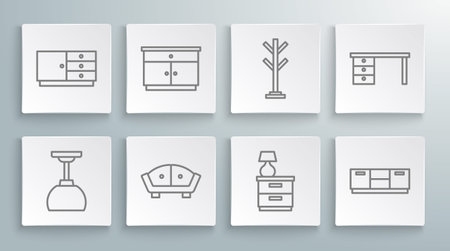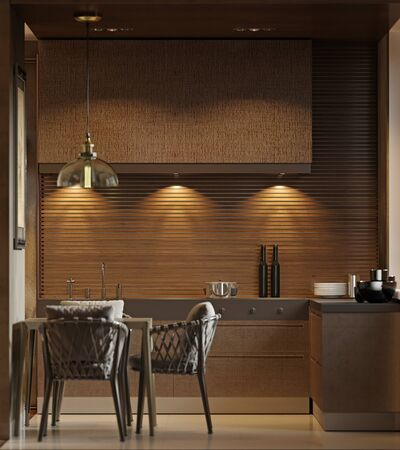Introduction to Kitchen Styles in the UK
The kitchen is often considered the heart of the British home—a place not only for cooking but also for gathering, entertaining, and enjoying everyday moments. Whether you live in a charming Victorian terrace or a sleek new-build flat, your kitchen’s design says a lot about your lifestyle and personality. Across the UK, two distinct styles dominate: classic and contemporary. Each offers unique benefits and aesthetics, and choosing between them can set the tone for your entire living space. In this guide, we’ll explore why kitchen design matters so much to British homeowners and introduce the timeless appeal of classic kitchens alongside the innovative features of contemporary styles. Before diving deeper into each style, let’s take a quick look at their main characteristics:
| Style | Key Features | Popular Materials |
|---|---|---|
| Classic | Traditional cabinetry, ornate details, warm colours | Wood, stone, ceramic tiles |
| Contemporary | Sleek lines, minimalist decor, bold accents | Glass, stainless steel, composite worktops |
This article will help you decide which style best suits your British home—while keeping an eye on your budget and offering plenty of practical DIY tips along the way.
2. What Defines a Classic British Kitchen?
When it comes to creating the timeless heart of a British home, classic kitchen design stands out for its character, warmth, and practicality. Whether you’re restoring a period property or looking to inject some traditional charm into a modern build, understanding the hallmarks of a classic British kitchen can help you make savvy DIY choices while keeping your budget on track.
Key Elements of Classic British Kitchens
| Feature | Description | DIY & Budget Tips |
|---|---|---|
| Shaker Cabinetry | Simple, square-framed doors with recessed panels. Timeless and versatile, these cabinets suit both cottages and Georgian terraces. | Opt for MDF shaker doors and paint them yourself for a bespoke look at a fraction of the cost. |
| Belfast Sinks | Deep ceramic sinks with an exposed front, perfect for big pots and pans—an icon in British homes. | Shop reclamation yards or look for replica Belfast sinks from local suppliers for savings. |
| Warm Colour Palettes | Classic kitchens favour muted tones like cream, sage green, soft grey, or duck egg blue to create a cosy feel. | Choose budget-friendly paints and experiment with tester pots before committing to a colour scheme. |
| Traditional Materials | Solid wood worktops, flagstone floors, and brass or pewter fittings bring authenticity and durability. | Consider reclaimed wood or laminate alternatives for worktops and upcycle vintage handles for unique charm without overspending. |
The Role of Layout and Lighting
Classic British kitchens often feature practical layouts such as the ‘galley’ or ‘L-shape’, maximising space while maintaining a welcoming flow. Natural light is enhanced by sash windows or skylights, complemented by pendant lamps over the table or counter. For those on a budget, swapping out harsh bulbs for warm-toned LEDs can instantly soften the mood.
Add Character with Finishing Touches
No classic kitchen is complete without open shelving displaying crockery, glass jars filled with baking essentials, or perhaps even a Welsh dresser. These finishing touches not only add visual interest but also provide practical storage—perfect for DIYers looking to personalise their space cost-effectively. Embracing these classic elements will help you craft a kitchen that feels both distinctly British and wonderfully timeless.

3. The Modern Appeal: What Makes a Kitchen Contemporary?
When considering the right kitchen style for your British home, understanding what truly defines a contemporary kitchen is essential. Modern UK kitchens are celebrated for their sleek aesthetics and functional design, making them perfect for busy urban lifestyles or open-plan living spaces commonly found in newer British homes.
Main Features of Contemporary Kitchens
Unlike classic styles that often focus on ornate details and traditional materials, contemporary kitchens are all about simplicity and efficiency. Here are the key features that set them apart:
| Feature | Description |
|---|---|
| Clean Lines | Straightforward designs with minimal ornamentation, creating a clutter-free and spacious look. |
| High-Gloss Finishes | Cabinets and surfaces often feature reflective, lacquered finishes in whites, greys, or bold colours for a polished effect. |
| Integrated Appliances | Appliances like fridges, ovens, and dishwashers are built seamlessly into cabinetry, maintaining uninterrupted lines. |
| Clever Storage Solutions | Pull-out larders, hidden drawers, and corner carousel units maximise every inch of space—ideal for the typically compact British kitchen. |
The Role of Technology and Materials
Contemporary British kitchens frequently incorporate state-of-the-art technology—think induction hobs, boiling water taps, and smart lighting. Worktops might be crafted from quartz or composite materials for durability and easy maintenance, reflecting the fast-paced modern lifestyle. When selecting finishes and appliances, consider energy efficiency ratings to keep running costs down—a practical tip for budget-conscious homeowners.
Why Choose Contemporary?
If you prefer a kitchen that feels bright, open, and equipped for everyday convenience, the contemporary style offers unmatched appeal. It’s particularly well-suited to flats or new builds across the UK where maximising light and space is often a priority. Plus, many contemporary features can be achieved through DIY upgrades—for example, swapping cabinet handles or fitting soft-close hinges—helping you refresh your kitchen without breaking the bank.
4. Comparing Classic and Contemporary: Practical Pros and Cons
| Classic Kitchens | Contemporary Kitchens | |
|---|---|---|
| Functionality | Timeless layouts with traditional cabinetry, often featuring lots of storage and solid wood worktops. May require more space for freestanding furniture. | Sleek designs with integrated appliances and clever storage solutions—perfect for maximising space in smaller, modern homes. |
| DIY-Friendliness | Many classic features can be upcycled or sourced second-hand from salvage yards, making them great for budget-friendly DIYers. Installation can be more straightforward if you’re restoring existing period features. | Flat-pack units are widely available and easier to assemble, but precise fitting of modern fixtures (like handleless cabinets) can require advanced DIY skills or professional help. |
| Cost-Effectiveness | You can save by repurposing original fittings or choosing reclaimed materials. However, bespoke carpentry and high-quality finishes may increase costs for larger spaces. | Off-the-shelf contemporary units are generally cheaper and less labour-intensive to install, but premium finishes like quartz worktops or built-in gadgets can bump up the price. |
| Suitability for British Homes | Ideal for period terraces, Victorian semis, or country cottages—classic kitchens enhance character and blend well with original architectural details. | The minimalist style is a natural fit for new builds, flats, or open-plan living spaces where light and space are priorities. They also suit homeowners seeking low-maintenance options. |
If you live in a charming Edwardian terrace in Manchester, a classic kitchen will preserve its heritage. On the other hand, a contemporary kitchen in a London new build flat will make the most of compact space. Think about your home’s bones before you commit—sometimes mixing elements from both styles delivers the best of both worlds without breaking the bank!
5. Budget DIY Tips for Creating Your Ideal Kitchen
Designing your dream kitchen on a budget is absolutely achievable, whether you lean towards a classic or contemporary British style. With a bit of creativity and hands-on effort, you can craft an impressive space using UK-sourced materials, clever upcycling, and local suppliers. Here are some practical tips to get started:
Source Locally & Save
When it comes to materials, look no further than your local builders’ merchants, salvage yards, and online marketplaces like Gumtree or Facebook Marketplace. Not only do these options often provide unique finds at lower prices, but you’ll also support your local community.
Classic vs Contemporary: DIY Material Ideas
| Kitchen Style | Materials to Source Locally | DIY Ideas |
|---|---|---|
| Classic | Reclaimed wood, vintage handles, Belfast sinks | Upcycle old dressers into kitchen islands; repaint cabinet doors with traditional shades (e.g., sage green or cream) |
| Contemporary | Sleek laminate worktops, modern taps, minimalist lighting | Replace just the cupboard fronts for a modern facelift; use sticky-back vinyl on splashbacks for a high-end look without the price tag |
Upcycling Furniture for Character & Savings
Upcycling is not only environmentally friendly but also adds personality to your kitchen. Hunt down second-hand tables or cabinets at charity shops or car boot sales. Sand them down and give them a fresh coat of paint or new hardware to fit your chosen style. For classic kitchens, opt for ornate knobs and muted tones; for contemporary spaces, choose sleek handles and bold hues.
DIY Projects That Make a Difference
- Create Open Shelving: Use scaffold boards from local suppliers for rustic shelves in a classic kitchen or painted MDF for a streamlined modern touch.
- Tiling Backsplashes: Try tiling yourself with discounted end-of-line tiles from British DIY stores like B&Q or Wickes.
- Lighting Upgrades: Swap out old pendants with affordable new fixtures from UK retailers such as Dunelm or IKEA to quickly refresh the space.
Budget Breakdown Example Table
| Task | Classic Cost (£) | Contemporary Cost (£) | Savings Tip |
|---|---|---|---|
| Cabinet Refresh (paint + handles) | 50–100 | 60–120 | D.I.Y. painting & fitting handles yourself saves labour costs |
| Worktop Upgrade (laminate/reclaimed wood) | 80–150 | 90–180 | Sourcing offcuts from local workshops reduces material waste & cost |
| Shelving Installation (scaffold/MDF) | 30–60 | 35–70 | Purchase raw materials & install with basic tools at home |
| Tiling Splashback (DIY) | 40–75 | 45–85 | Select clearance tiles & lay them yourself with ready-mix adhesive/grout kits |
The Takeaway: Hands-On Savings for Any Style
No matter your preference—classic charm or contemporary chic—embracing DIY techniques and sourcing locally in the UK lets you create a stylish kitchen without overspending. With a bit of elbow grease and creative thinking, you’ll have a space that’s both beautiful and budget-friendly.
6. Sustainability and British Kitchen Design
When choosing between classic and contemporary kitchen styles for your British home, sustainability is a key consideration that aligns with modern values and can also help you save money in the long run. Whether you prefer the timeless charm of a shaker kitchen or the clean lines of a modern design, there are plenty of ways to make eco-friendly choices that complement either style.
Eco-Friendly Materials: Classic & Contemporary Approaches
Opting for sustainable materials is a practical way to reduce your environmental impact. Consider using locally sourced timber for cabinets, reclaimed wood for shelving, or upcycled furniture pieces as focal points. These options not only look beautiful but add unique character to your space—perfect for both traditional and modern settings. Here’s a quick comparison:
Element |
Classic Style |
Contemporary Style |
|---|---|---|
Cabinetry |
Reclaimed oak or pine, painted finishes | Bamboo, FSC-certified plywood, high-gloss recycled materials |
Worktops |
Local stone (e.g., Welsh slate), upcycled butcher block | Recycled glass composite, eco-resin surfaces |
Flooring |
Restored Victorian tiles, reclaimed floorboards | Cork, recycled rubber, responsibly sourced engineered wood |
The Importance of Local Sourcing in the UK
Sourcing materials and products from within the UK reduces carbon emissions linked to transport and supports local businesses. Whether youre purchasing bespoke cabinetry from a Yorkshire workshop or picking up vintage fixtures at your local salvage yard, keeping it local fits well with both classic and contemporary kitchen projects.
Upcycling: A British DIY Favourite
Upcycling is not only budget-friendly but also right at home in British interiors. Transform old dressers into kitchen islands or repurpose pub stools into breakfast bar seating. This approach lets you personalise your space while keeping perfectly good items out of landfill—a win-win for both style and sustainability.
Why Sustainable Choices Matter in UK Renovations
The UK has set ambitious targets for reducing household waste and carbon footprints. By integrating sustainable elements into your kitchen renovation, you’re contributing to these national goals while future-proofing your investment. Energy-efficient appliances, water-saving taps, and LED lighting are sensible upgrades that suit any style while helping you save on bills.
7. Which Style Suits Your British Home?
Choosing between classic and contemporary kitchen styles for your British home can feel overwhelming, but with a few guiding questions and careful consideration of your property’s unique features, you can make the best decision for your lifestyle and budget. Here are some key factors to help you decide:
Lifestyle Considerations
- Do you love hosting friends and family? If yes, a contemporary open-plan kitchen might better suit your sociable lifestyle.
- Is practicality or heritage more important? Classic kitchens often feature durable materials and timeless layouts, ideal for busy households or those who value tradition.
- How much time do you spend cooking? Modern kitchens often offer ergonomic designs and smart storage solutions perfect for avid cooks.
Architectural Harmony
- What is the age and style of your home? Period properties—such as Victorian terraces or Georgian townhouses—often look stunning with classic features like shaker cabinets and Belfast sinks. Contemporary styles can work well in new-builds or homes with clean lines and open spaces.
- Are there existing features worth highlighting? Exposed beams, original fireplaces, or sash windows are beautifully complemented by a classic approach, while minimal architectural details may invite a sleek contemporary design.
Regional Influences
- Does your location influence your design? Rural or countryside homes often lend themselves to classic, cottage-inspired kitchens, while urban flats in London or Manchester might benefit from bold modern finishes.
- What about climate and light? Northern homes with less natural light may feel brighter with contemporary gloss finishes, whereas southern homes can carry off deeper hues typical of classic kitchens.
Quick Comparison Table
| Classic Kitchen | Contemporary Kitchen | |
|---|---|---|
| Main Features | Bespoke cabinetry, natural wood, traditional fittings | Sleek surfaces, handleless units, integrated appliances |
| Best For | Period properties, family homes, rural areas | New builds, city apartments, open-plan living |
| Budget-Friendly Tips | Upcycle vintage pieces; repaint cabinets; add classic hardware | Flat-pack units; DIY splashbacks; mix high-street finds with statement pieces |
| Cultural Fit (UK) | Cottagecore, traditional British charm | Cosmopolitan, minimalist trends seen in UK cities |
Pointers for Making the Final Choice:
- Create a mood board with British magazines or Pinterest UK boards to visualise your preferred look.
- Visit local showrooms or kitchen suppliers to see styles that match the architecture common in your region.
- Consider future resale value—classic styles tend to be timeless in the UK market.
- If on a budget, blend elements: add modern lighting to a classic kitchen or use heritage colours in a contemporary space.
The right choice will balance your personal taste with the character of your home and the practical needs of everyday life. Take time to reflect on these points before making any major decisions—your dream kitchen awaits!

